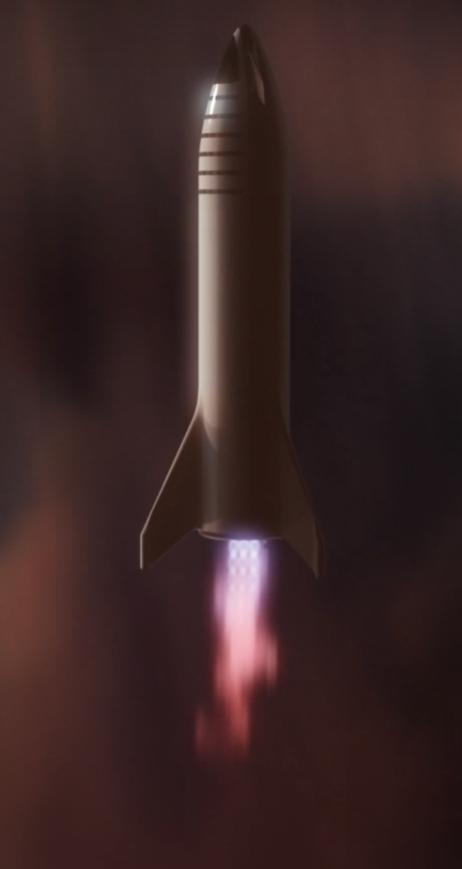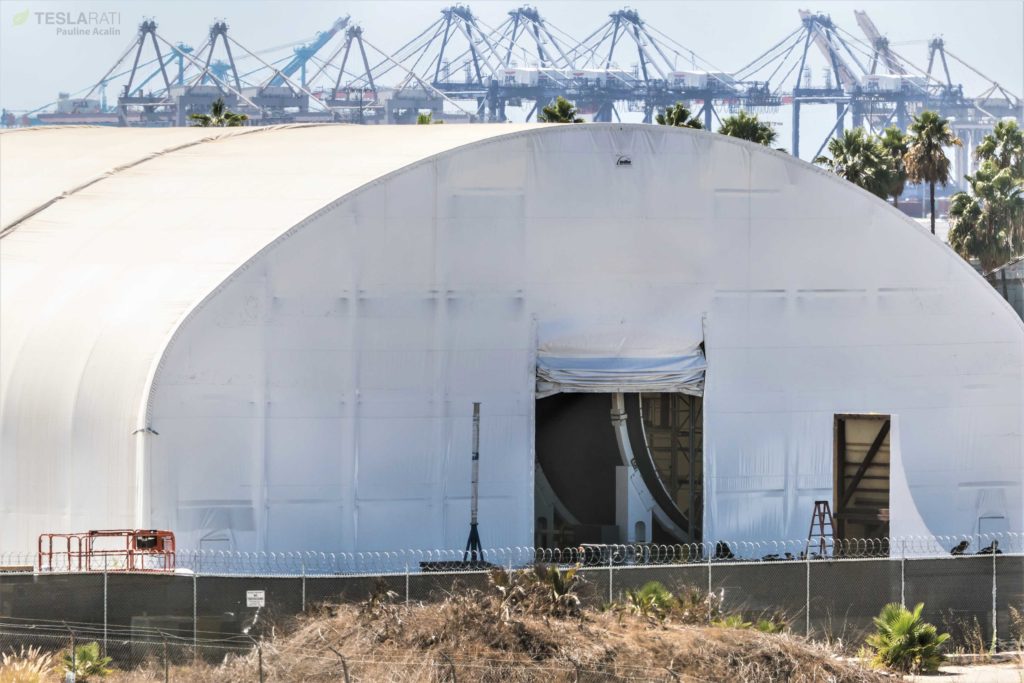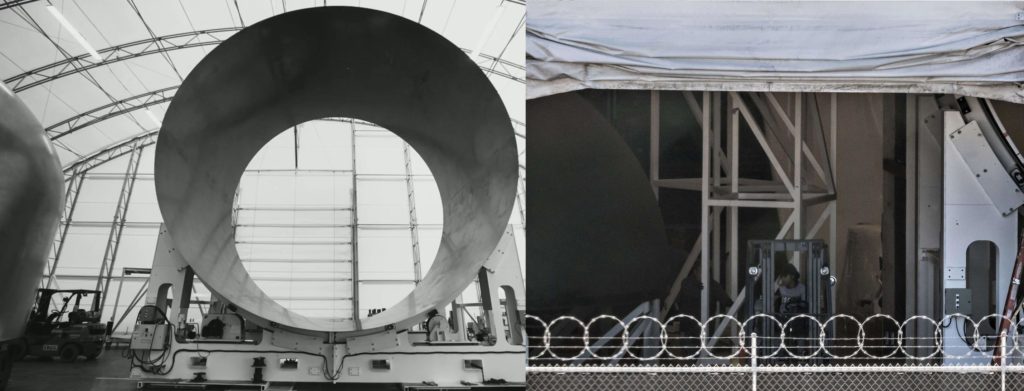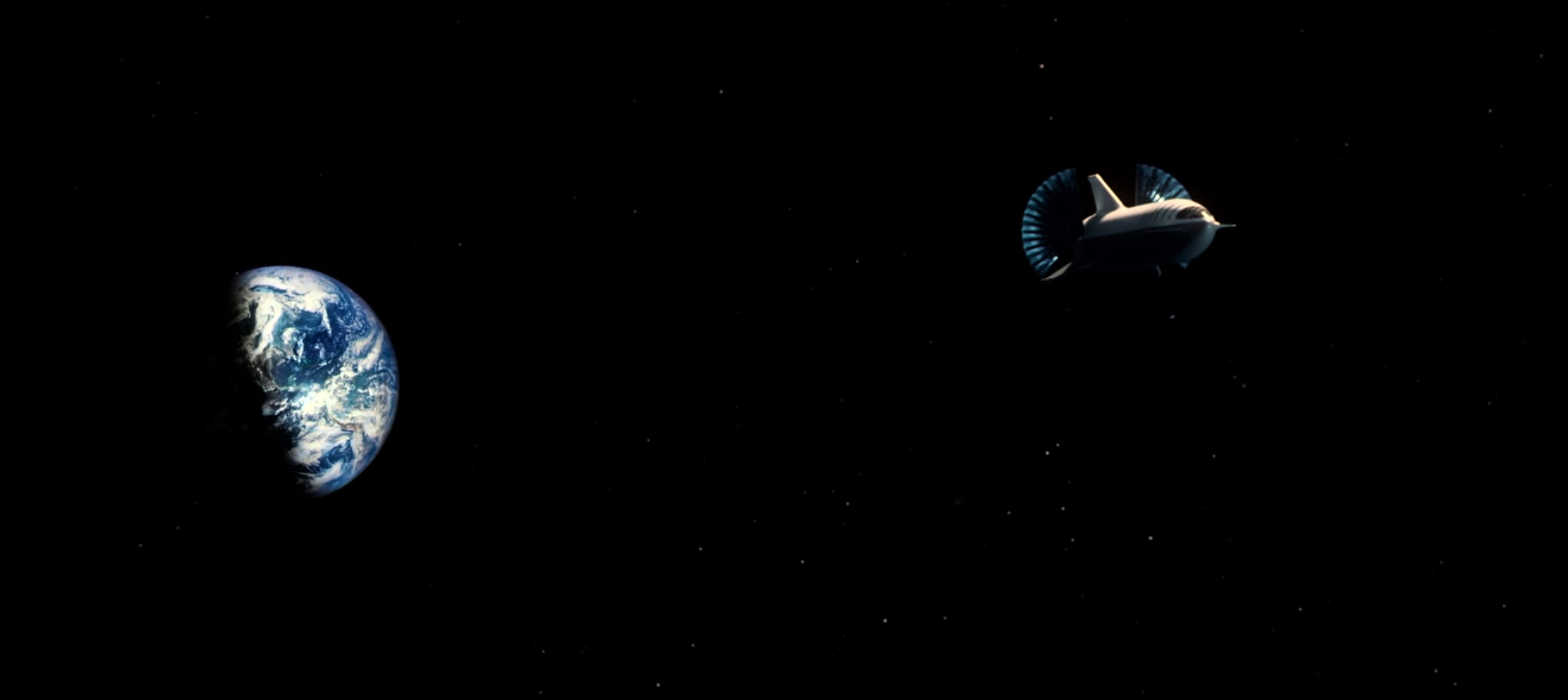
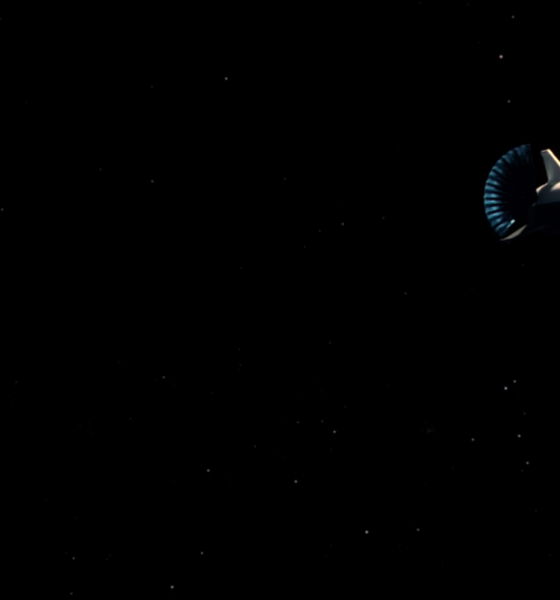
News
SpaceX CEO Elon Musk kills mini BFR spaceship 12 days after announcing it
Less than two weeks after SpaceX CEO Elon Musk announced that Falcon 9’s “second stage [would] be upgraded…like a mini-BFR Ship” to prove lightweight heatshield and hypersonic control surface technologies, Musk took to Twitter to assert that the mini BFR spaceship project was dead, despite having stated that SpaceX was working to launch that test article into orbit as early as June 2019 just 12 days prior.
From a public perspective, the status of SpaceX’s next-gen rocket program (known as BFR) is effectively up in the air after several cryptic and seemingly contradictory statements from the company’s CEO and chief engineer.
No, we’re just going to accelerate BFR
— Elon Musk (@elonmusk) November 20, 2018
On Nov. 17, Musk tweeted that BFR – last updated in September 2018 alongside a statement that “this is [likely] the the final iteration [of BFR] in terms of broad architectural decisions” – had already been redesigned, going so far as to describe it as a “radical change”. What that radical design change might be is almost entirely unclear, although Musk has now twice stated that the purpose of these changes (and the whiplash-inducing cancellation of the mini-spaceship) is to “accelerate BFR”.
Radical change
— Elon Musk (@elonmusk) November 17, 2018
As of now, SpaceX appears to have just completed a massive 9-meter diameter composite tank dome in the company’s temporary Port of Los Angeles tent, where a small but growing team of engineers and technicians are working to realize some version of the company’s next-generation rocket. That group has been working in near-silence for the better part of a year and has accepted delivery of and set up a wide range of custom-built tooling for carbon composite fabrication, and has even managed to get that tooling producing massive composite parts that are expected to eventually make up the structure of a spaceship prototype.
That prototype would eventually be shipped to South Texas, where SpaceX is constructing an entirely new facility from scratch to test the design, technology, and operation of the first full-scale BFR spaceship (BFS). As of a few months ago, the plan was to begin those hop tests before the end of 2019, but it’s no longer clear if SpaceX still intends to build a prototype spaceship to conduct hops and high-speed, high-altitude test flights.
- BFR’s spaceship design, as of 2018. (SpaceX)
- A BFS attempts a Mars landing in this official updated render. (SpaceX)
- SpaceX’s huge Port of LA-based BFR tent, September 18th. (Pauline Acalin)
- SpaceX’s first BFR spaceship prototype is coming together piece by piece. (SpaceX/Pauline Acalin)
Responsibly building giant rockets
One can only hope that the SpaceX employees tasked with bringing an already monumentally difficult idea from concept to reality are learning about these earth-shaking, “radical” decisions and changes through a medium other than Twitter. If those senior engineers and technicians are not extensively forewarned and given some say in these major system-wide decisions, it’s hard to exaggerate the amount of time, effort, and resources potentially being wasted (or at least misdirected).
There is undoubtedly something to be said for getting complex and difficult things as right as possible on the first serious try, especially when the sheer expense of the task at hand might mean that there is only one real chance to try. Still, it’s not particularly encouraging when a three-year-old hardware development program marked by several major design iterations is still experiencing anything close to “radical change”. After multiple years of concerted effort, BFR still appears to be in some sort of design limbo, where a constant and haphazard stream of on-paper changes act as a near-insurmountable hurdle standing in the way of a completed “good enough” blueprint that can begin to be made real.
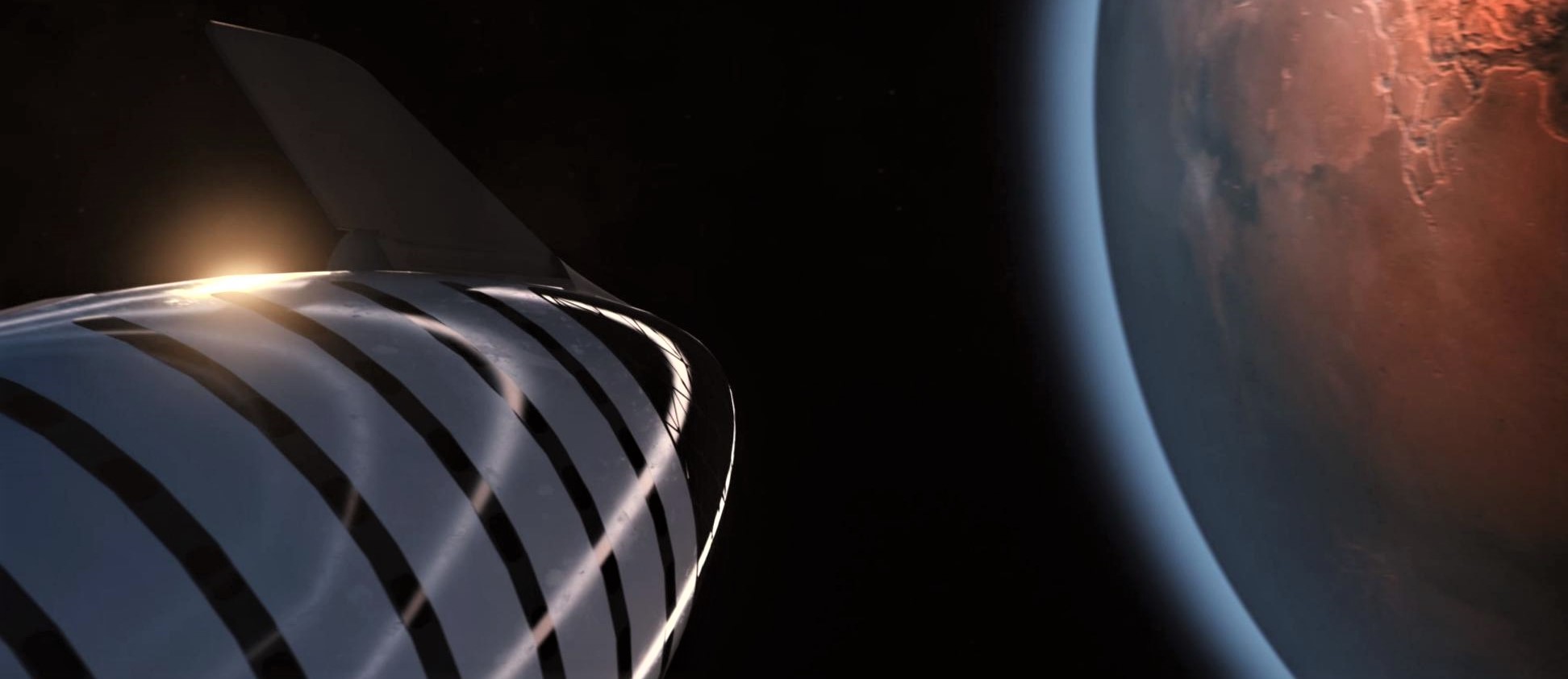
Ultimately, even if some of the worst-case scenarios described above turn out to be true, there are still many, many reasons to remain positive about SpaceX’s BFR program on the whole. The next-gen rocket’s propulsion system of choice – an advanced engine known as Raptor – is quite mature at this point and may already be nearing initial flight readiness. Regardless of any future changes to BFR’s overall spaceship and booster structures, SpaceX technicians, engineers, and material scientists have likely gained invaluable experience in pursuit of an unprecedented 9-meter diameter rocket built almost entirely out of carbon fiber composites.
Further, it appears that quite a bit of progress has been made over the course of R&D programs related to methane-oxygen RCS thrusters (Falcon uses nitrogen), autogenous tank pressurization with gaseous methane and oxygen (Falcon uses helium), and perhaps even in-situ resource utilization (ISRU) that will be an absolute necessity to generate water, oxygen, and methane that will keep prospective Mars colonists alive and refuel spaceships for the voyage back to Earth.
- SpaceX’s horizontal Raptor test stand is pictured here in April 2018. A prototype Raptor can be seen in the center bay. (Aero Photo/Teslarati)
- A new rocket test-stand takes shape at SpaceX’s McGregor, TX facilities. As of just a few months ago, this site was effectively barren of activity. (April 17, Aero Photo)
- SpaceX’s Boca Chica facilities now sport two massive propellant tanks, meant to support BFR spaceship hop tests. (NSF /u/ bocachicagal, SpaceX)
For prompt updates, on-the-ground perspectives, and unique glimpses of SpaceX’s rocket recovery fleet check out our brand new LaunchPad and LandingZone newsletters!

News
Tesla Full Self-Driving lands in a new country, its 7th
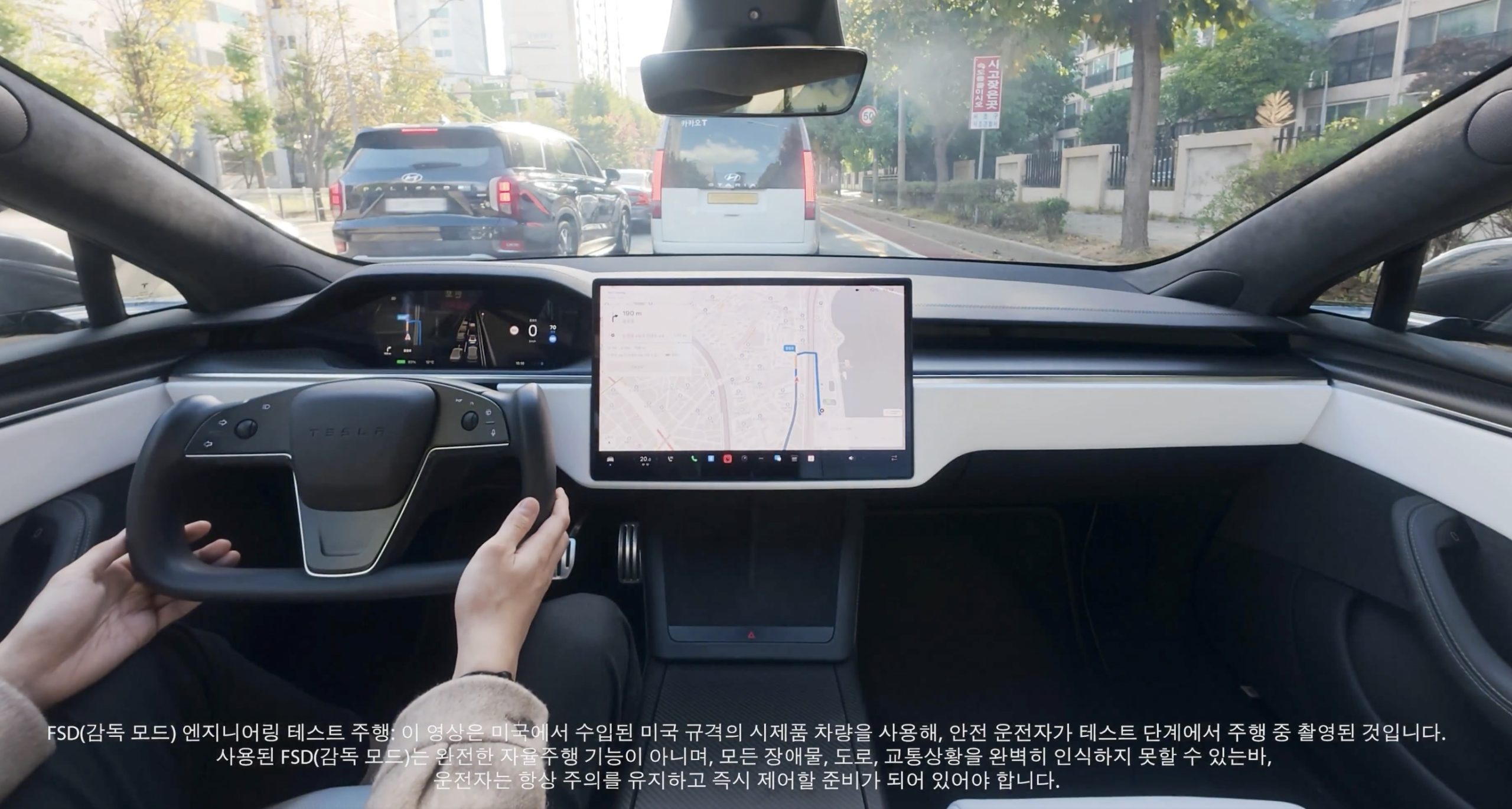
Tesla Full Self-Driving has officially landed in a new country today, its seventh overall after it launched in both Australia and New Zealand earlier this year.
On Sunday, Tesla owners in South Korea reported that the company’s Full Self-Driving (Supervised) had started arriving in their vehicles. Owners reported that it was v14.1.4, which is not the latest version available in other countries, but is one of the most recent releases Tesla has deployed to drivers:
From 6 to 7
Tesla Full Self-Driving has launched in South Korea; the 7th country to have FSD https://t.co/X6gm1SyoxV
— TESLARATI (@Teslarati) November 23, 2025
This marks the seventh country in which Tesla has enabled its Full Self-Driving suite, following the United States and Puerto Rico, Canada, China, Mexico, Australia, and New Zealand.
Tesla launched Full Self-Driving most recently in Australia and New Zealand about three months ago. The expansion is a major breakthrough for the company as it aims to launch Full Self-Driving on a global scale.
However, the company’s biggest challenge thus far has been getting European regulatory agencies to handle the red tape that has inhibited Tesla from launching its semi-autonomous driving suite on the continent. Recently, it admitted that it sees a pathway through Dutch regulatory bodies, which seem to be the most willing to work with Tesla to get FSD in Europe.
Tesla Full Self-Driving appears to be heading to Europe soon
The company said that it has driven over 1 million kilometers safely on European roads across 17 different countries in internal testing. But its path to success will be by “partnering with the Dutch approval authority RDW to gain exemption for the feature. This involves proving compliance with existing regulations (UN-R-171 DCAS) + filing an exemption (EU Article 39) for yet-to-be-regulated behaviors like Level 2 systems off-highway, system-initiated lane changes with hands-off the wheel, etc.”
Perhaps the expansion into Europe will be the biggest challenge for Tesla, but it could also yield major results and advantages for the company moving forward. Tesla said it hopes to have FSD available in Europe sometime early next year.
For now, the expansion in South Korea is the latest win for Tesla and its self-driving efforts. In the U.S., it now turns its focus toward fully autonomous operation, as it works with state agencies to launch Robotaxi outside of Texas, California, and most recently, Arizona.
Elon Musk
Tesla CEO Elon Musk teases insane capabilities of next major FSD update

Tesla CEO Elon Musk teased the insane capabilities of the next major Full Self-Driving update just hours after the company rolled out version 14.2 to owners.
Tesla Full Self-Driving v14.2 had some major improvements from the previous iteration of v14.1.x. We were on v14.1.7, the most advanced configuration of the v14.1 family, before Tesla transitioned us and others to v14.2.
However, Musk has said that the improvements coming in the next major update, which will be v14.3, will be where “the last big piece of the puzzle finally lands.”
14.3 is where the last big piece of the puzzle finally lands
— Elon Musk (@elonmusk) November 21, 2025
There were some major improvements with v14.2, most notably, Tesla seemed to narrow in on the triggers that caused issues with hesitation and brake stabbing in v14.1.x.
One of the most discussed issues with the past rollout was that of brake stabbing, where the vehicle would contemplate proceeding with a route as traffic was coming from other directions.
We experienced it most frequently at intersections, especially four-way stop signs.
Elon Musk hints at when Tesla can fix this FSD complaint with v14
In our review of it yesterday, it was evident that this issue had been resolved, at least to the extent that we had no issues with it in a 62-minute drive, which you can watch here.
Some owners also reported a more relaxed driver monitoring system, which is something Tesla said it was working on as it hopes to allow drivers to text during operation in the coming months. We did not test this, as laws in Pennsylvania prohibit the use of phones at any time due to the new Paul Miller’s Law, which took effect earlier this year.
However, the improvements indicate that Tesla is certainly headed toward a much more sentient FSD experience, so much so that Musk’s language seems to be more indicative of a more relaxed experience in terms of overall supervision from the driver, especially with v14.3.
Musk did not release or discuss a definitive timeline for the release of v14.3, especially as v14.2 just rolled out to Early Access Program (EAP) members yesterday. However, v14.1 rolled out to Tesla owners just a few weeks ago in late 2025. There is the potential that v14.3 could be part of the coming Holiday Update, or potentially in a release of its own before the New Year.
News
Tesla Full Self-Driving v14.2 – Full Review, the Good and the Bad

Tesla rolled out Full Self-Driving version 14.2 yesterday to members of the Early Access Program (EAP). Expectations were high, and Tesla surely delivered.
With the rollout of Tesla FSD v14.2, there were major benchmarks for improvement from the v14.1 suite, which spanned across seven improvements. Our final experience with v14.1 was with v14.1.7, and to be honest, things were good, but it felt like there were a handful of regressions from previous iterations.
While there were improvements in brake stabbing and hesitation, we did experience a few small interventions related to navigation and just overall performance. It was nothing major; there were no critical takeovers that required any major publicity, as they were more or less subjective things that I was not particularly comfortable with. Other drivers might have been more relaxed.
With v14.2 hitting our cars yesterday, there were a handful of things we truly noticed in terms of improvement, most notably the lack of brake stabbing and hesitation, a major complaint with v14.1.x.
However, in a 62-minute drive that was fully recorded, there were a lot of positives, and only one true complaint, which was something we haven’t had issues with in the past.
The Good
Lack of Brake Stabbing and Hesitation
Perhaps the most notable and publicized issue with v14.1.x was the presence of brake stabbing and hesitation. Arriving at intersections was particularly nerve-racking on the previous version simply because of this. At four-way stops, the car would not be assertive enough to take its turn, especially when other vehicles at the same intersection would inch forward or start to move.
This was a major problem.
However, there were no instances of this yesterday on our lengthy drive. It was much more assertive when arriving at these types of scenarios, but was also more patient when FSD knew it was not the car’s turn to proceed.
Can report on v14.2 today there were ZERO instances of break stabbing or hesitation at intersections today
It was a significant improvement from v14.1.x
— TESLARATI (@Teslarati) November 21, 2025
This improvement was the most noticeable throughout the drive, along with fixes in overall smoothness.
Speed Profiles Seem to Be More Reasonable
There were a handful of FSD v14 users who felt as if the loss of a Max Speed setting was a negative. However, these complaints will, in our opinion, begin to subside, especially as things have seemed to be refined quite nicely with v14.2.
Freeway driving is where this is especially noticeable. If it’s traveling too slow, just switch to a faster profile. If it’s too fast, switch to a slower profile. However, the speeds seem to be much more defined with each Speed Profile, which is something that I really find to be a huge advantage. Previously, you could tell the difference in speeds, but not in driving styles. At times, Standard felt a lot like Hurry. Now, you can clearly tell the difference between the two.
It seems as if Tesla made a goal that drivers should be able to tell which Speed Profile is active if it was not shown on the screen. With v14.1.x, this was not necessarily something that could be done. With v14.2, if someone tested me on which Speed Profile was being used, I’m fairly certain I could pick each one.
Better Overall Operation
I felt, at times, especially with v14.1.7, there were some jerky movements. Nothing that was super alarming, but there were times when things just felt a little more finicky than others.
v14.2 feels much smoother overall, with really great decision-making, lane changes that feel second nature, and a great speed of travel. It was a very comfortable ride.
The Bad
Parking
It feels as if there was a slight regression in parking quality, as both times v14.2 pulled into parking spots, I would have felt compelled to adjust manually if I were staying at my destinations. For the sake of testing, at my first destination, I arrived, allowed the car to park, and then left. At the tail-end of testing, I walked inside the store that FSD v14.2 drove me to, so I had to adjust the parking manually.
This was pretty disappointing. Apart from parking at Superchargers, which is always flawless, parking performance is something that needs some attention. The release notes for v14.2. state that parking spot selection and parking quality will improve with future versions.
Any issues with parking on your end? 14.1.7 didn’t have this trouble with parking pic.twitter.com/JPLRO2obUj
— TESLARATI (@Teslarati) November 21, 2025
However, this was truly my only complaint about v14.2.
You can check out our full 62-minute ride-along below:

